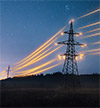When a company is in the market for a new facility, communities come ready to sell. You’ll hear a lot about abundant talent, excess utility capacity, fast-track permitting and even how eager the mayor is to shake your hand. The proposals often sound great. But sounding great isn’t the same as being real — and as the decision-maker tasked with guiding your company’s investment, it’s on you to tell the difference.
I’ve seen both sides of this process. Before I became a site selector, I spent years working in state government and leading business development for a large industrial park. I know how it feels to be excited about a prospect and to want to put the best possible face forward. But I also know what it looks like when a community wins a deal it isn’t actually prepared to support. It can stall a project, waste capital and damage reputations on all sides.
The best community proposals aren’t the flashiest — they’re the most honest.
One of the most important lessons I’ve learned is that the best community proposals aren’t the flashiest. They’re the most honest. When a site doesn’t have everything today but has a realistic plan for getting there, I’ll take that over a vague “yes” every time. If a community says it has the workforce, the power or the permitting flexibility you need, your first instinct should be to ask: based on what?
There’s a big difference between marketing language and operational readiness. A strong proposal explains not just what a site offers, but how and when it will be delivered — and who’s responsible for delivering it. If the site has three megawatts of available power today and your project needs four, the right proposal will tell you that upfront. It’ll go further and spell out what conversations have already taken place with the utility, what upgrades are needed, what funding sources are available and what timeline is realistic. That kind of transparency builds trust. It also helps your team make a well-informed decision instead of chasing down surprises months later.
3
Another red flag is a proposal that makes assumptions about what your company does or doesn’t want to see. I’ve watched economic developers downplay union activity because they assumed it would be seen as a negative — only to find out the company was actually looking for a strong union environment. A site selector’s job is to compare each option objectively. That only works when the information provided is complete and unvarnished. If a proposal glosses over a challenge, or pretends it doesn’t exist, it becomes harder to trust the rest of the pitch.
A vague “yes” is not a substitute for real infrastructure.
Not every community will be a perfect fit. That’s fine. But when evaluating proposals, your team should be less focused on whether a site checks every box today, and more focused on whether the community understands what it takes to get there. A well-prepared location will be upfront about constraints, provide realistic projections and show that its local partners are aligned and ready to work with you.
The truth is, you can do a lot with a good partner — even if they’re not at 100 percent on day one. But you can’t do much with a community that tries to sell you something it can’t deliver. If a proposal sounds too good to be true, it probably is. And if it’s missing critical detail about how key promises will be met, it’s worth taking a closer look.
The goal isn’t to find perfection on paper. It’s to find a location where your business can succeed — supported by partners who tell the truth, solve problems early and keep their word once the deal is done.




